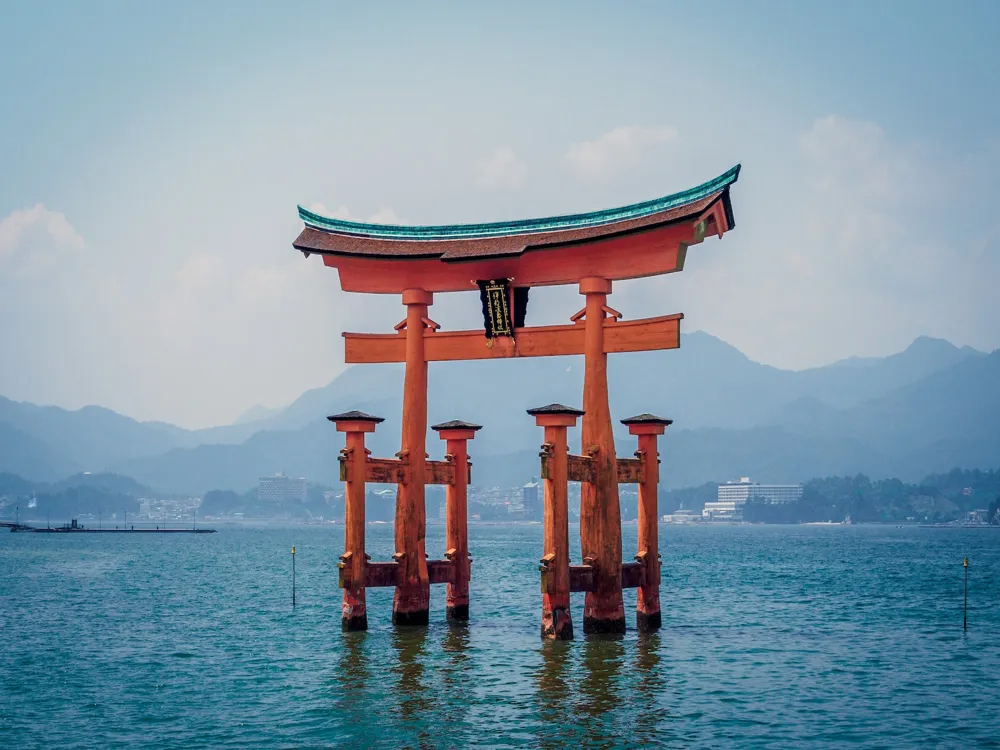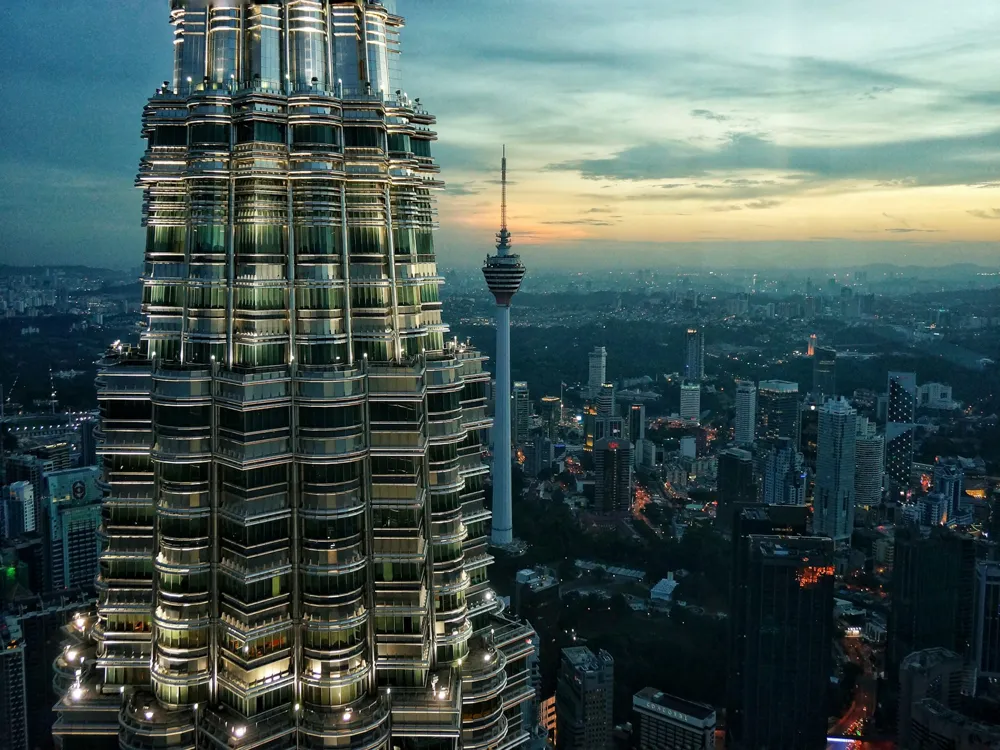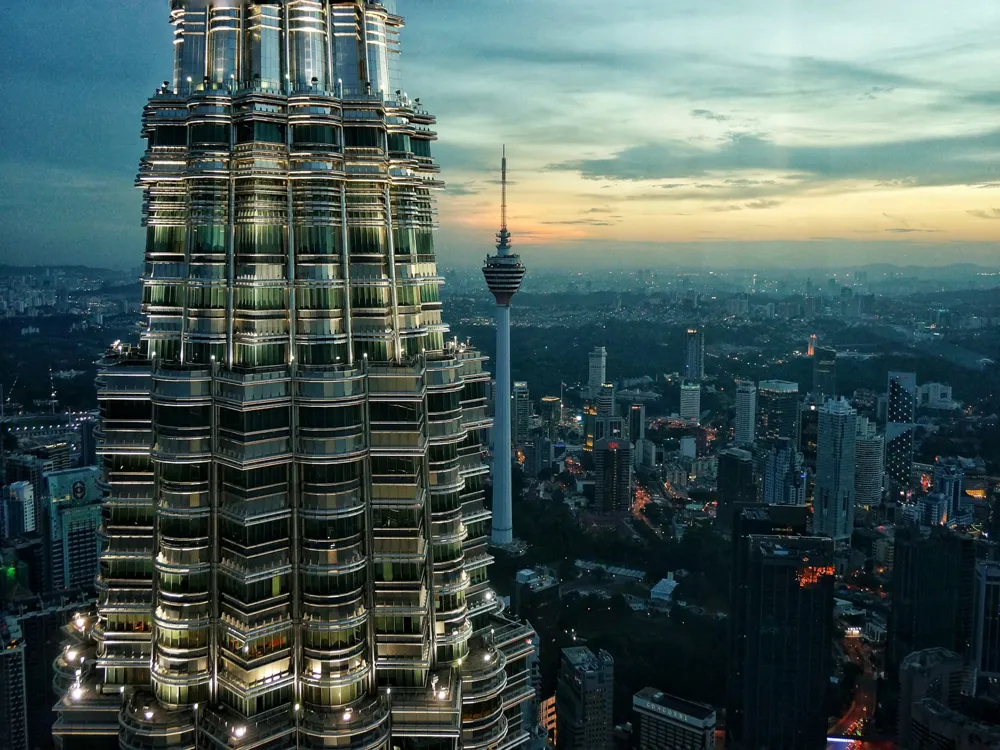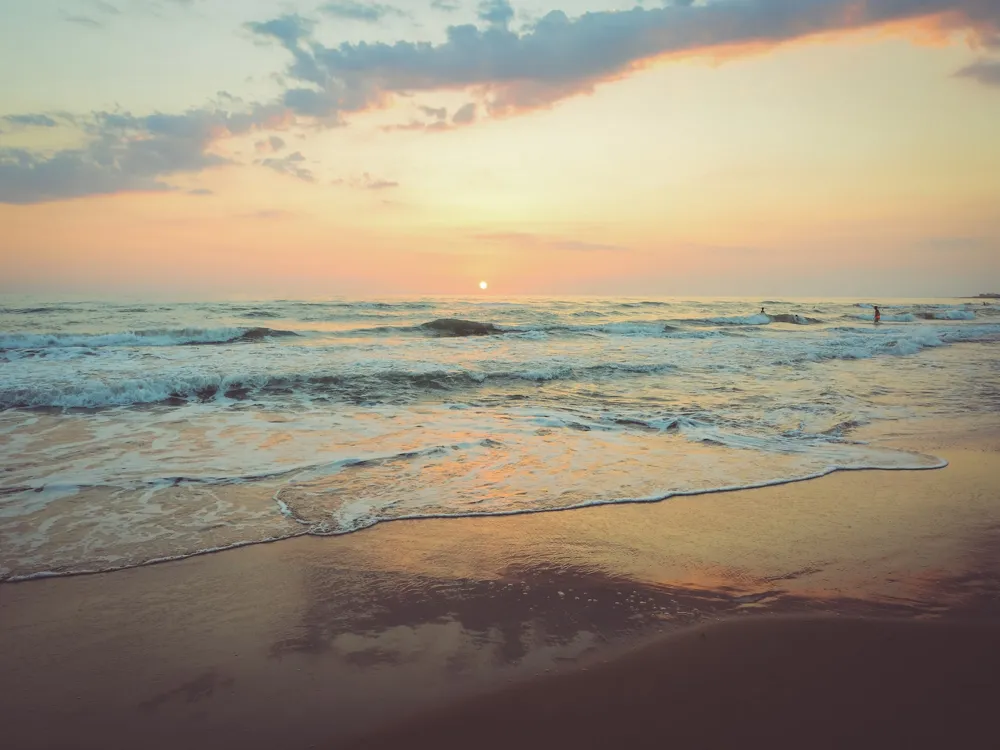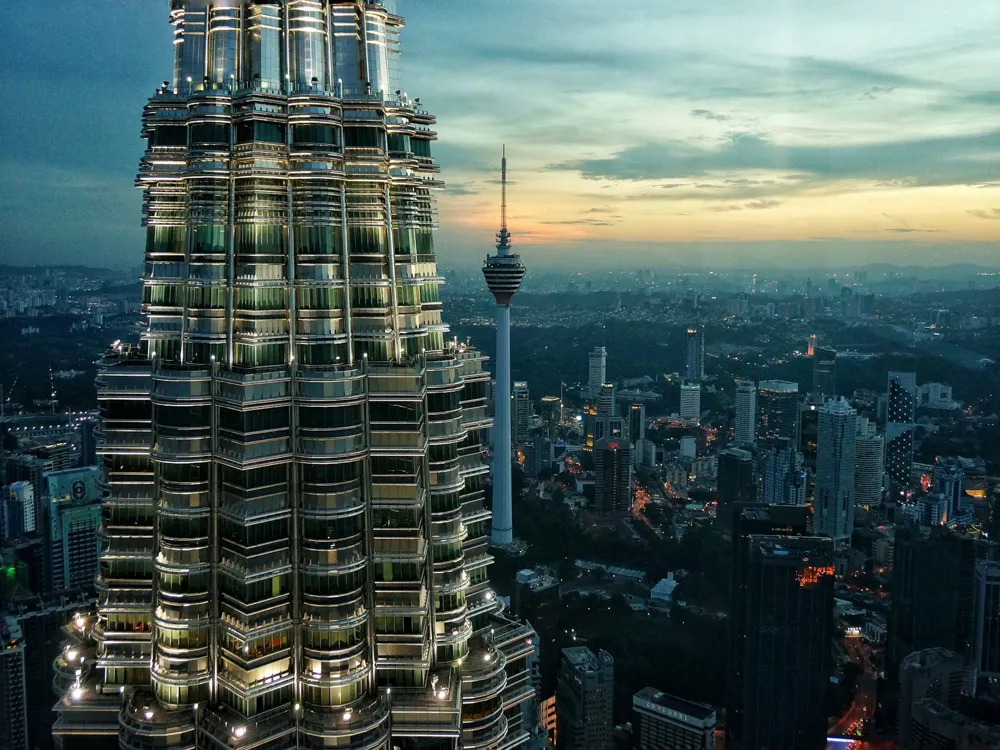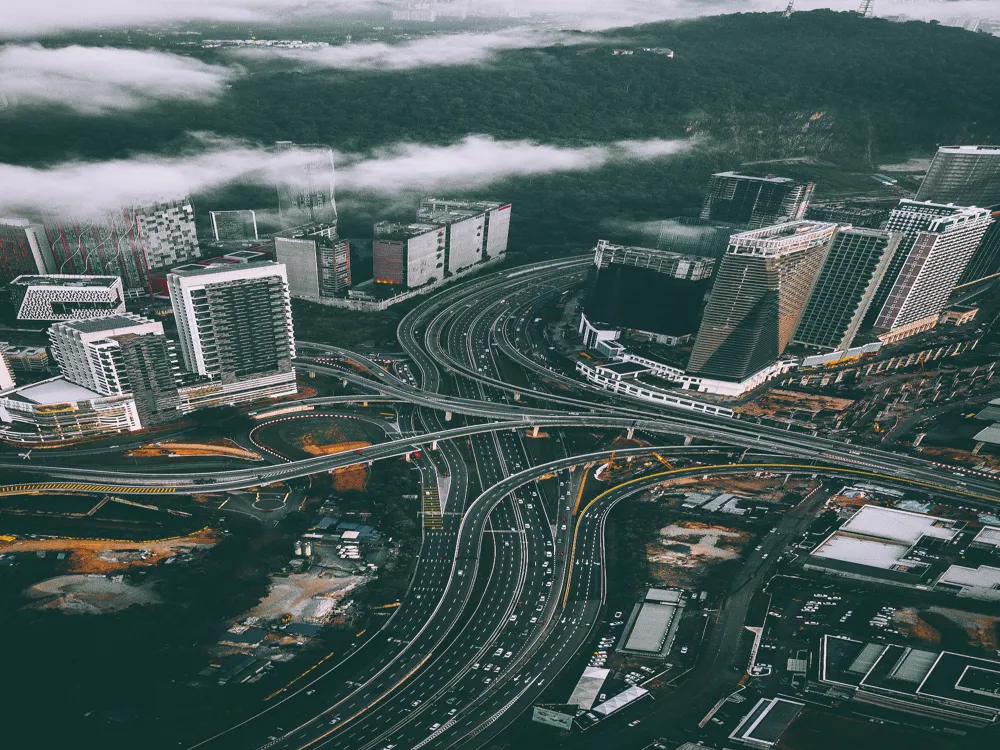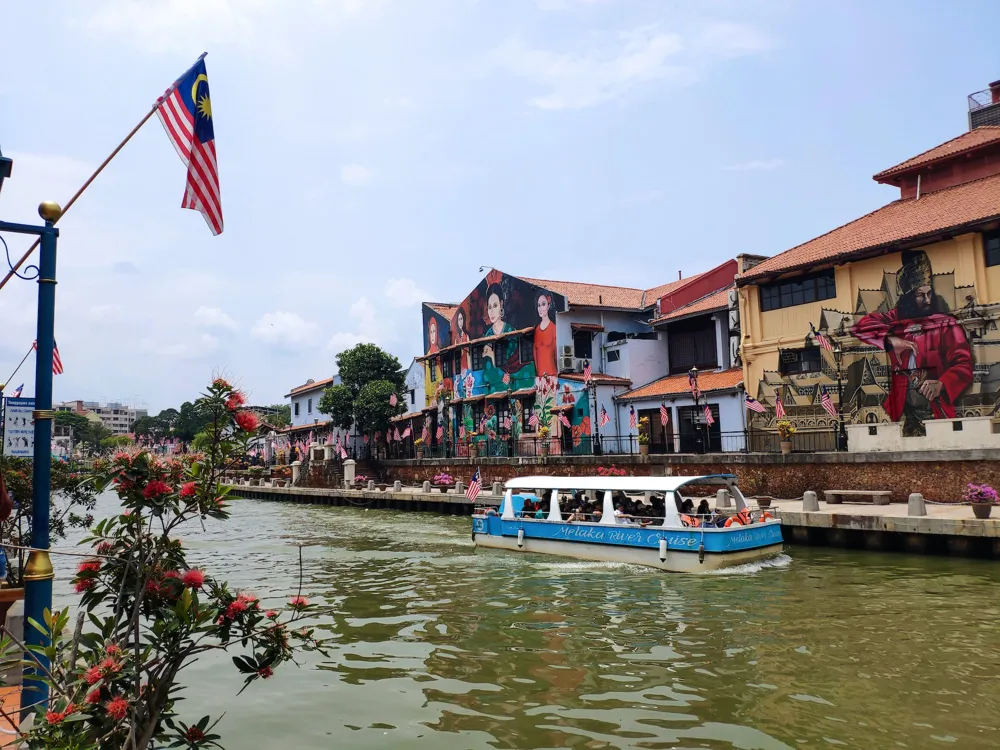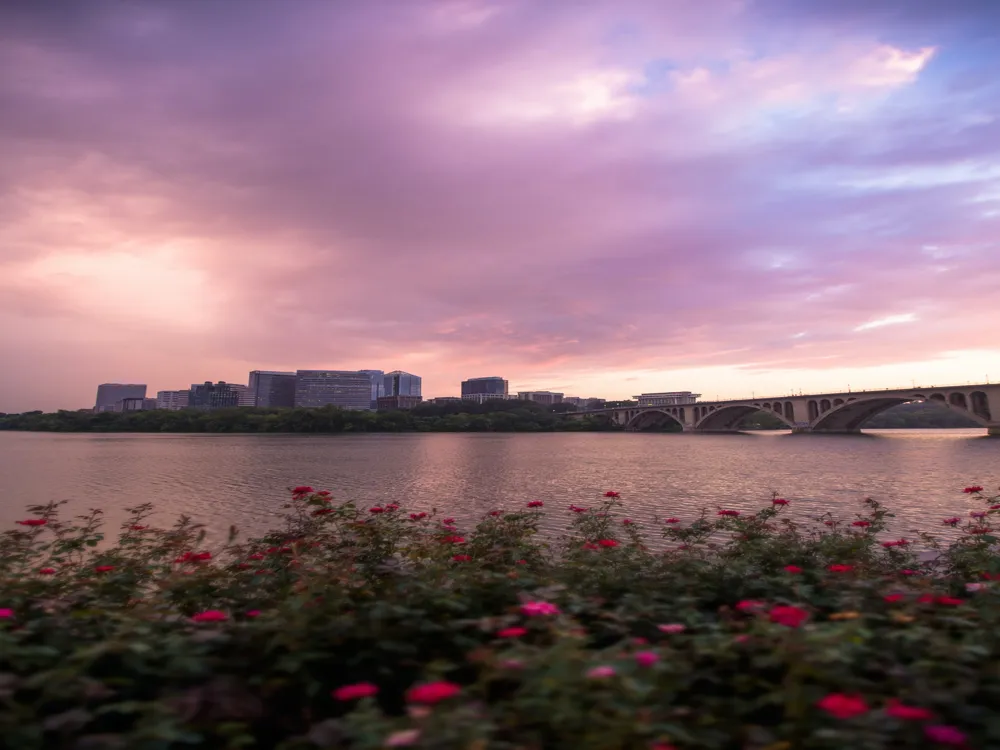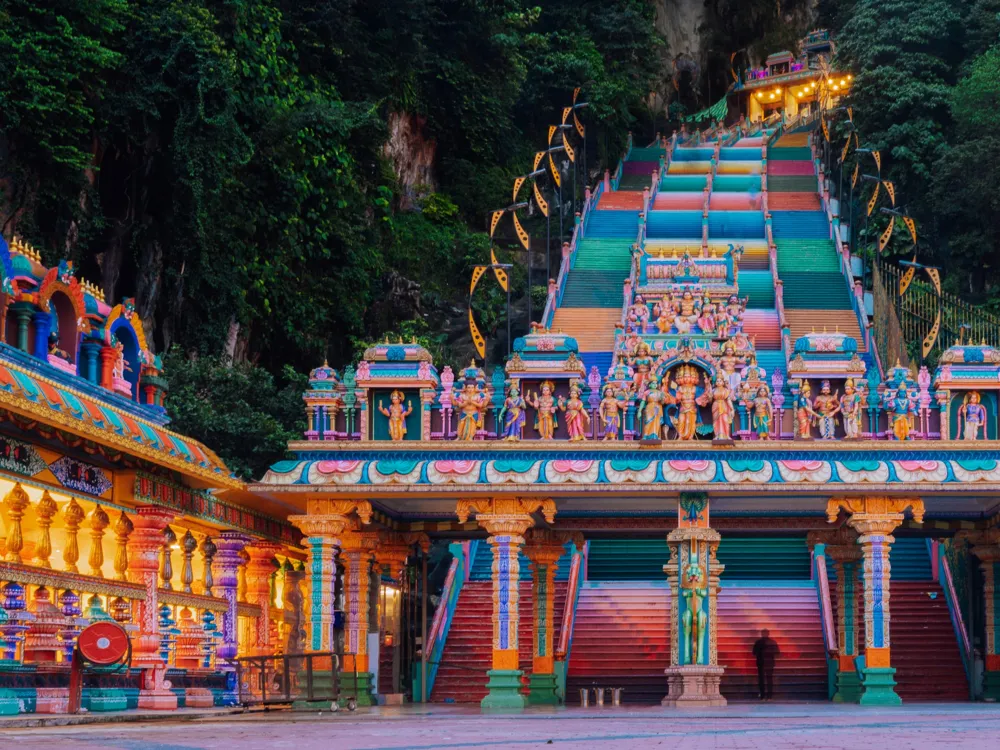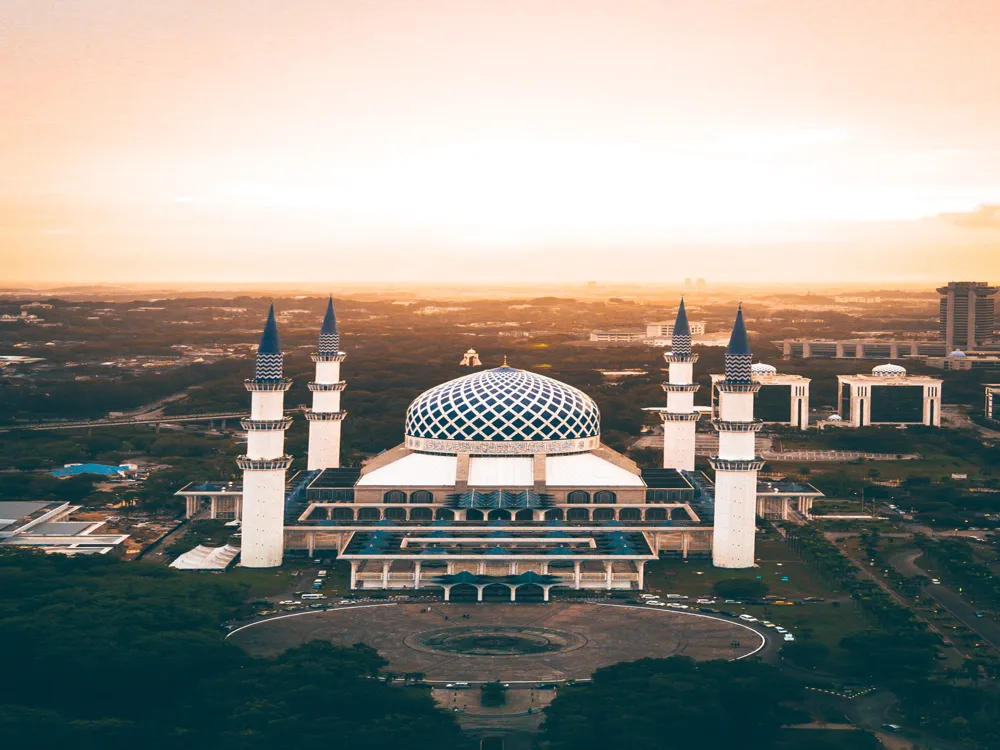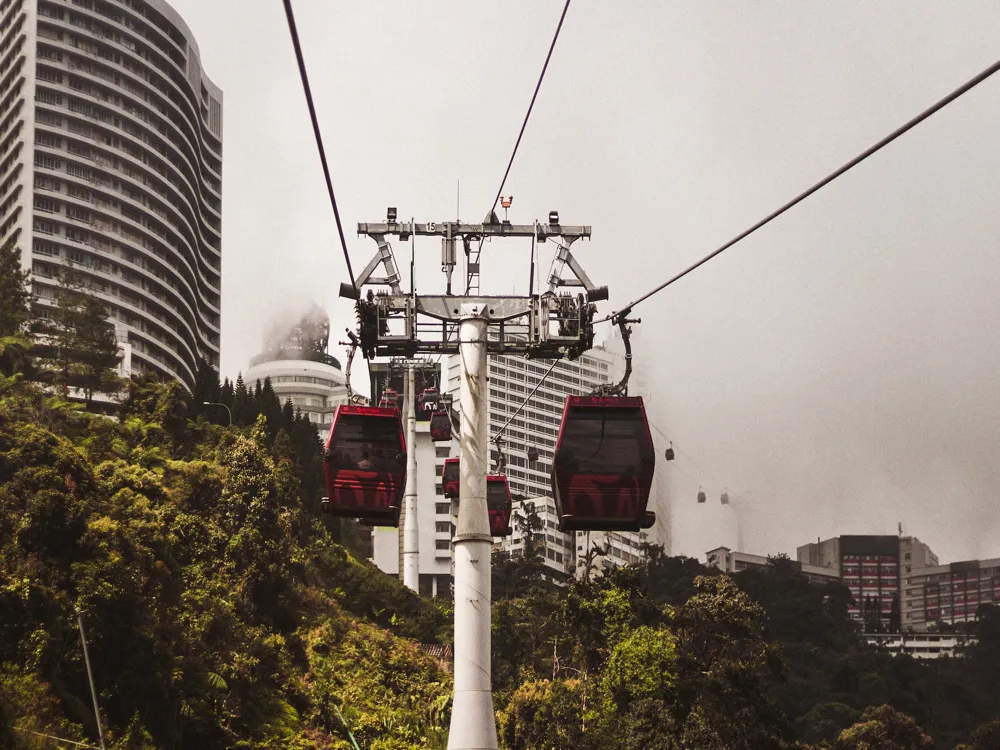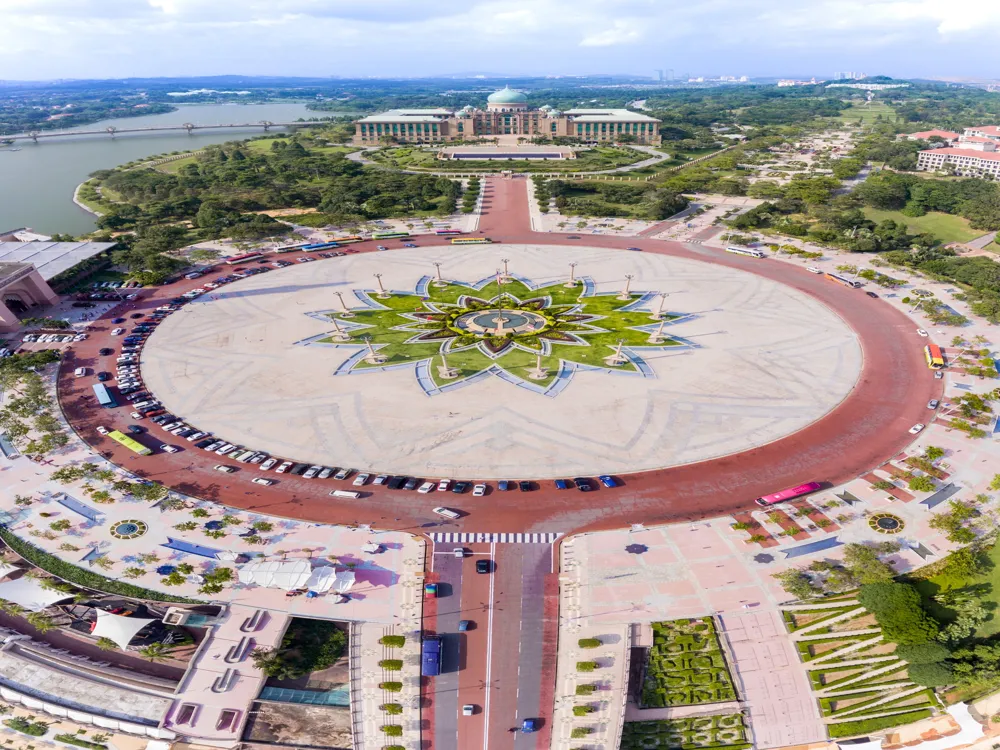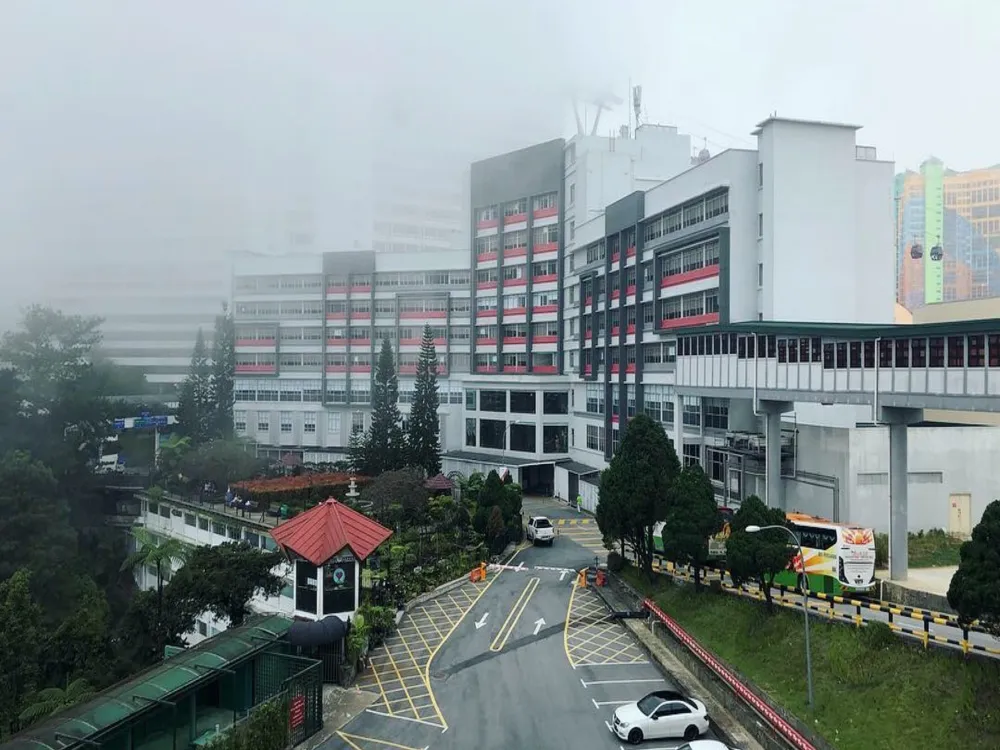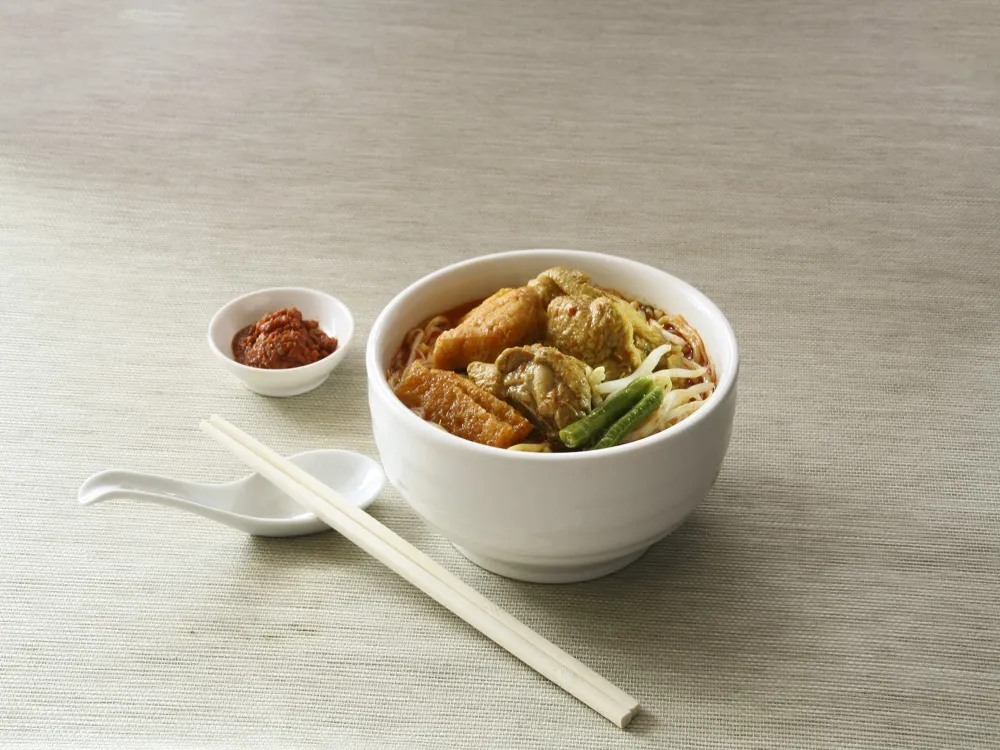Tugu Negara, or the National Monument of Malaysia, stands as a symbol of pride and remembrance in the heart of Kuala Lumpur. This monumental structure is not just an ordinary landmark; it embodies the valiant spirit of Malaysia's struggle for freedom and independence. Erected to honor the heroes who fought for the sovereignty of the nation, Tugu Negara is the epitome of Malaysia's rich history and cultural heritage. The monument's history dates back to the early 1960s, following the end of World War II and the Malayan Emergency. It was during these tumultuous times that Malaysia, then known as Malaya, witnessed the sacrifices of its soldiers and civilians in the face of adversity. The government, recognizing the need to commemorate these brave souls, commissioned the construction of Tugu Negara as a perpetual symbol of their bravery and sacrifice. Situated in the lush greenery of the Lake Gardens, the monument offers a serene and reflective environment for visitors. The location itself is significant, chosen for its tranquil surroundings, providing a stark contrast to the tumultuous events it commemorates. The monument's proximity to other historical landmarks in Kuala Lumpur, such as the Parliament House and the National Mosque, further emphasizes its importance in the nation's history and identity. Tugu Negara is not just a memorial; it is a masterpiece of art and architecture. The monument comprises several components, each symbolizing different aspects of the struggle for freedom. The central statue, a group of bronze figures, portrays seven soldiers holding the Malaysian national flag, each figure representing one of the seven qualities of leadership: command, unity, strength, wariness, suffering, courage, and sacrifice. This powerful imagery serves as a reminder of the resilience and unity of the Malaysian people. Additionally, the monument features the cenotaph, an upright structure bearing the names of the fallen heroes, and the surrounding gardens, which include a pavilion and a reflecting pool. The combination of these elements creates a holistic and immersive experience for visitors, inviting them to not only witness but also reflect upon the sacrifices made for the nation's freedom. Every year, Tugu Negara becomes the focal point of national celebrations, particularly on Hari Pahlawan (Heroes' Day), where ceremonies are held to honor the fallen heroes. These events bring together people from all walks of life, reflecting the monument's role in fostering national unity and patriotism. The presence of Tugu Negara in the Malaysian landscape serves as a constant reminder of the country's journey toward independence and the ongoing commitment to peace and freedom. The architectural design of Tugu Negara is a remarkable blend of artistic expression and symbolic representation, conceived by renowned sculptor Felix de Weldon. De Weldon, known for his iconic Iwo Jima Memorial in Washington, D.C., brought his expertise and vision to the creation of this Malaysian monument. The design process involved meticulous planning and a deep understanding of the cultural and historical context of Malaysia, resulting in a masterpiece that resonates with the nation's identity. The centerpiece of Tugu Negara is the bronze sculpture, standing at an impressive height of 15 meters. The sculpture depicts a group of soldiers holding the national flag aloft, captured in various poses that signify the different aspects of warfare and leadership. The figures are larger than life, symbolizing the grandeur and magnitude of their sacrifice. The use of bronze as a material not only adds to the monument's durability but also imparts a sense of timelessness, reflecting the enduring nature of the heroes' legacy. The intricate detailing on the sculpture is a testament to de Weldon's craftsmanship. Each figure is meticulously sculpted, with attention paid to the expressions, postures, and attire, conveying a sense of realism and intensity. The dynamic composition of the figures, seeming to move forward against all odds, creates a powerful visual impact, embodying the spirit of determination and resilience. Surrounding the central sculpture is the cenotaph, an element that adds a solemn and reflective dimension to the monument. The cenotaph, a tall, slender pillar, bears the names of the fallen heroes, inscribed for posterity. Its simplicity contrasts with the complexity of the sculpture, providing a space for quiet contemplation and remembrance. The architectural layout of the surrounding area is designed to complement the monument. The gardens, pathways, and reflective pool create a serene and contemplative atmosphere, inviting visitors to engage with the monument not just visually but emotionally. The landscaping is carefully planned to ensure that the monument remains the focal point, while also providing a harmonious and natural setting. Felix de Weldon's design for Tugu Negara is not merely a representation of Malaysia's struggle for independence; it is a celebration of the human spirit. The monument stands as a beacon of hope, resilience, and unity, encapsulating the essence of what it means to be Malaysian. It is a source of inspiration, reminding future generations of the sacrifices made for their freedom and the importance of preserving peace and harmony. Before visiting Tugu Negara, it's advisable to check the weather forecast as the experience is largely outdoor. The monument is open daily, and entry is free. However, it's best to visit early in the morning or late in the afternoon to avoid the midday heat and crowds. Also, remember that Tugu Negara is a place of remembrance and respect, so dress modestly and behave accordingly. Consider joining a guided tour to gain a deeper understanding of the monument's history and significance. Tours are often available and can provide insights that you might not get from a self-guided visit. Additionally, informational plaques and signs around the monument offer historical context and descriptions in multiple languages. Photography is allowed at Tugu Negara, and it's a great opportunity to capture the beauty and significance of the monument. However, visitors should be respectful and avoid posing inappropriately with the statues. It's also important to keep the area clean and not litter, as the site is a symbol of national pride and heritage. Tugu Negara is accessible to visitors with disabilities, with ramps and well-maintained paths. There are also public restrooms and seating areas around the monument. However, it's good to carry your water and perhaps an umbrella for shade, as the Kuala Lumpur weather can be unpredictable. You can combine your visit to Tugu Negara with other nearby attractions such as the Lake Gardens, the National Mosque, and the Islamic Arts Museum. This area of Kuala Lumpur is rich in historical and cultural sites, making it an ideal location for a day of exploration and learning. Tugu Negara, located in the heart of Kuala Lumpur, is easily accessible by various modes of transportation. For those using public transport, the nearest train station is the Kuala Lumpur KTM station, from where you can take a short taxi or bus ride to the monument. Alternatively, the RapidKL buses have routes that pass near Tugu Negara, making it a convenient and affordable option. For visitors driving, there is ample parking available near the monument. The roads are well-signposted, making it easy to navigate to Tugu Negara. However, traffic in Kuala Lumpur can be heavy, especially during rush hours, so plan your travel accordingly. For international or out-of-state visitors, Kuala Lumpur International Airport (KLIA) is the main gateway. From the airport, you can hire a taxi or use the KLIA Express train to get to the city center, and then continue to Tugu Negara via taxi, bus, or train. Regardless of your mode of transportation, visiting Tugu Negara is a seamless and rewarding experience. The monument's central location in Kuala Lumpur makes it an accessible and must-visit destination for anyone interested in Malaysia's history and culture. Read More:Overview of Tugu Negara, Kuala Lumpur
Architecture of Tugu Negara
Tips When Visiting Tugu Negara
Planning Your Visit
Guided Tours and Information
Photography and Etiquette
Accessibility and Facilities
Combining Your Visit with Other Attractions
How To Reach Tugu Negara
Tugu Negara
Kuala Lumpur
₹ 18,000 onwards
View kuala-lumpur Packages
Weather :
Tags : Monument
Timings : 7:00 AM - 6:00 PM every day
Time Required : Less than 1 hour
Entry Fee : No entry fee
Planning a Trip? Ask Your Question
Kuala-lumpur Travel Packages
View All Packages For Kuala-lumpur
Top Hotel Collections for Kuala-lumpur

Private Pool

Luxury Hotels

5-Star Hotels

Pet Friendly
Top Hotels Near Kuala-lumpur
Other Top Ranking Places In Kuala-lumpur
View All Places To Visit In kuala-lumpur
View kuala-lumpur Packages
Weather :
Tags : Monument
Timings : 7:00 AM - 6:00 PM every day
Time Required : Less than 1 hour
Entry Fee : No entry fee
Planning a Trip? Ask Your Question
Kuala-lumpur Travel Packages
View All Packages For Kuala-lumpur
Top Hotel Collections for Kuala-lumpur

Private Pool

Luxury Hotels

5-Star Hotels

Pet Friendly







